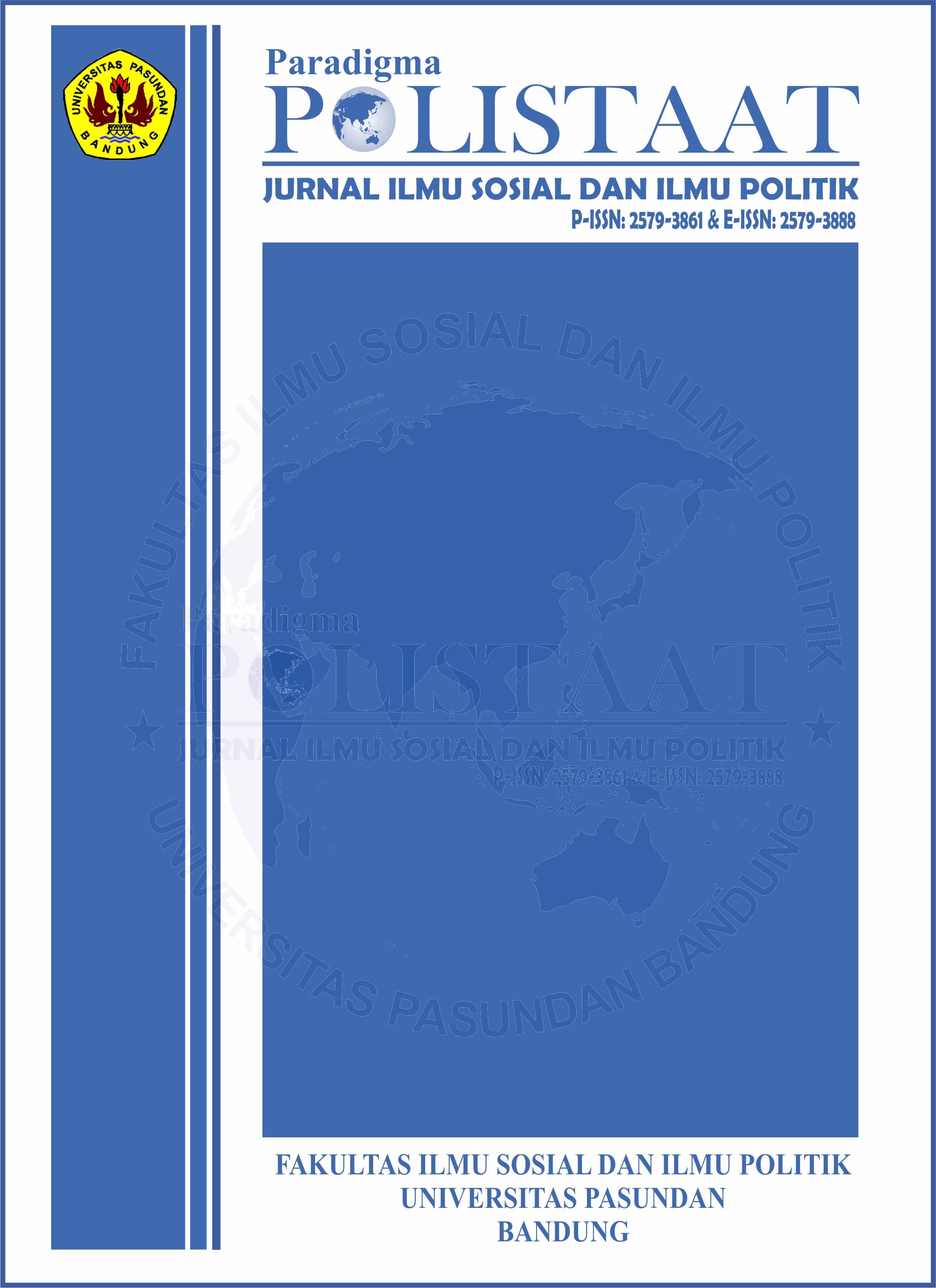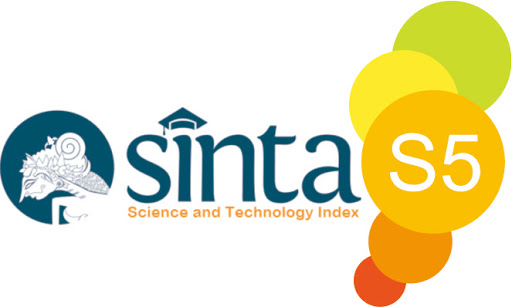STRATEGI PENGEMBANGAN ENERGI TERBARUKAN CINA DALAM RENCANA LIMA TAHUN KE-13 UNTUK MEMENUHI CAPAIAN SDG7
DOI:
https://doi.org/10.23969/paradigmapolistaat.v4i2.5510Keywords:
Cina, Energi Terbarukan, Rencana Lima Tahun Ke-13, SDG7, StrategiAbstract
This article aims to identify China's renewable energy development strategy in the 13th Five-Year Plan to meet SDG7 achievements. The development of renewable energy is an important part of sustainable development. Renewable energy is implicitly regulated in the 7th goal of the Sustainable Development Goals (SDG7) which was agreed in September 2015. China as one of the countries carrying out the energy transition process has a major role in ensuring the achievement of SDG7. To ensure the development of renewable energy, China has formulated a renewable energy development agenda in one of its policies, namely, the 13th Five Year Plan for the 2016-2020 period. Using descriptive research methods and SWOT analysis methods, this study examines the types of strategies used by the Chinese Government in ensuring the development of renewable energy to meet the achievements set out in SDG7. This article finds that the Chinese Government established four types of strategies in the 13th Five-Year Plan. This strategy is the main concept of China's renewable energy development in ensuring the achievement of SDG7 in the 2016-2020 period.
Downloads
References
Andreas Hasenclever, P. M. and V. R. (1997). Theories of international regimes. Cambridge Studies in International Relations, 55(6), 248.
Boqiang, L. (2018, May 22). China is a renewable energy champion. But it’s time for a new approach. Retrieved May 20, 2021, from World Economic Forum website: https://www.weforum.org/agenda/2018/05/china-is-a-renewable-energy-champion-but-its-time-for-a-new-approach/
BP. (2020). Statistical Review of World Energy globally consistent data on world energy markets . and authoritative publications in the field of energy The Statistical Review world of World Energy and data on world energy markets from is The Review has been providing. 66. Retrieved from https://www.bp.com/content/dam/bp/business-sites/en/global/corporate/pdfs/energy-economics/statistical-review/bp-stats-review-2020-full-report.pdf
Data & Statistics - IEA. (2017). Data & Statistics - IEA. Retrieved May 21, 2021, from IEA website: https://www.iea.org/data-and-statistics/data-
Development, O. N. S. (2016). Spotlight on Sustainable Development 2016. Report by the Reflection Group on the 2030 Agenda for Sustainable Development.
Dudley, D. (2019, January 11). China Is Set To Become The World’s Renewable Energy Superpower, According To New Report. Forbes. Retrieved from https://www.forbes.com/sites/dominicdudley/2019/01/11/china-renewable-energy-superpower/?sh=549b4037745a
Fossil fuel reserves: When will we run out of oil, gas and coal? (2015, December 6). Retrieved May 21, 2021, from Eco-info.net website: https://eco-info.net/fossil-fuel-reserves/
GÜREL, E. (2017). Swot Analysis: a Theoretical Review. Journal of International Social Research, 10(51), 994–1006. https://doi.org/10.17719/jisr.2017.1832
Hove, A. (2020). Current direction for renewable energy in China. Oxford Energy Comment, (June). Retrieved from http://www.nea.gov.cn/2020-02/28/c_138827910.htm
IRENA. (2020a). Renewable Energy and Jobs – Annual Review 2020. Retrieved from www.irena.org
IRENA. (2020b). Renewable Energy Statistics 2020. Renewable hydropower (including mixed plants). Retrieved from www.irena.org
Jackson, F. (2020, December 10). Solar Soars As Emerging Markets Renewables Investment Hits Record High. Forbes. Retrieved from https://www.forbes.com/sites/feliciajackson/2020/12/09/solar-soars-as-emerging-markets-renewables-investment-hits-record-high/?sh=337be0757434
Karaoğlan, S., & Durukan, T. (2016). Effect of Environmental Awareness on Willingness to Pay for Renewable Energy. Researchgate.Net, IJBMI(12), 42–48. Retrieved from https://www.researchgate.net/publication/313063687
LAN. (2015). Modul Pelatihan Analis Kebijakan. Pusaka Lembaga Administrasi Negara RI.
Liu, J. (2019). China’s renewable energy law and policy: A critical review. Renewable and Sustainable Energy Reviews, 99(October 2018), 212–219. https://doi.org/10.1016/j.rser.2018.10.007
National Development and Reform Commission. (2016). 13th Five-Year Plan for Renewable Energy Development (Vol. 24, p. 22). Vol. 24, p. 22. Retrieved from http://www.nea.gov.cn/135916140_14821175123931n.pdf
Nhamo, G., Nhemachena, C., Nhamo, S., Mjimba, V., & Savić, I. (2020). Energy in the Context of the 2030 Agenda for Sustainable Development. SDG7 – Ensure Access to Affordable, Reliable, Sustainable and Modern Energy, 1–31. https://doi.org/10.1108/978-1-78973-799-820201003
Ovidijus Jurevicius. (2014, October 20). Why you need to know about IFE & EFE Matrices. Retrieved June 14, 2021, from Strategic Management Insight website: https://strategicmanagementinsight.com/tools/ife-efe-matrix.html
Renewable Power Generation Costs in 2019. (2019). Retrieved May 21, 2021, from Irena.org website: https://www.irena.org/publications/2020/Jun/Renewable-Power-Costs-in-
Sarsby, A. (2012). A useful guide to SWOT analysis. Retrieved from http://www.cii.co.uk/media/6158020/a-useful-guide-to-swot-analysis.pdf
Yuan, J. (2018). The future of coal in China. Resources, Conservation and Recycling, 129, 290–292. https://doi.org/10.1016/j.resconrec.2016.12.006
Downloads
Published
Issue
Section
License

Paradikma Polistaat: Jurnal Ilmu Sosial dan Ilmu politik is licensed under a Creative Commons Attribution-ShareAlike 4.0 International License
In order to be accepted and published by Paradigma POLISTAAT: Jurnal Ilmu Sosial dan Ilmu politik, author(s) submitting the article manuscript should complete all the review stages. By submitting the manuscript the author(s) agreed to these following terms:
1. The copyright of received articles shall be assigned to Paradigma POLISTAAT: Jurnal Ilmu Sosial dan Ilmu politikas the publisher of the journal. The intended copyright includes the right to publish articles in various forms (including reprints). Paradigma POLISTAAT: Jurnal Ilmu Sosial dan Ilmu politikmaintain the publishing rights to the published articles.
2. Authors are permitted to disseminate published article by sharing the link/DOI of the article at Paradigma POLISTAAT: Jurnal Ilmu Sosial dan Ilmu politik. authors are allowed to use their articles for any legal purposes deemed necessary without written permission fromParadigma POLISTAAT: Jurnal Ilmu Sosial dan Ilmu politik with an acknowledgement of initial publication to this journal.
3. Users/public use of this website will be licensed to CC BY-SA (Attribution & ShareAlike).















